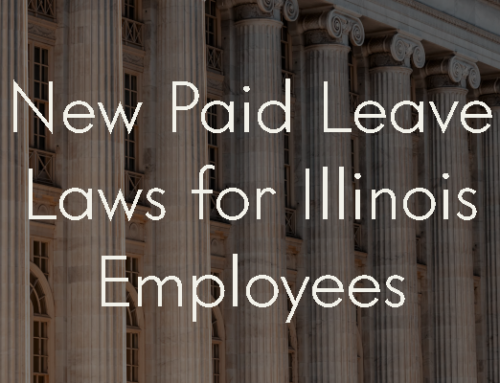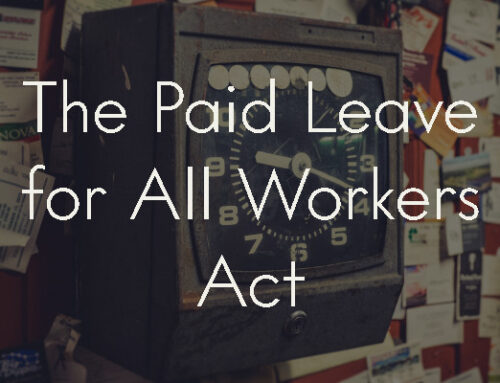Disclaimer: We are not experts in health or policy and make no guarantees as to the accuracy or timeliness of the details on this page. This page is for informational purposes only. See our full COVID-19 disclaimer for more.
If your business has hit trouble because of the pandemic and you need guidance, the attorneys at G & G Law have assembled a toolkit of accessible, easy-to-digest information that answers many common questions we’ve received from our clients. You can read more about it and purchase it here.
This is a featured post from our good friend Jennifer Brugh of JRB Law, LLC, an experienced tax attorney right down the street. You can find the original on her blog. While you’re there, check her out!
www.jrblawoffice.com / P: (773) 231-7488 / F: (773) 273-8613
Last updated April 10th, 2020
News is coming out daily, and it can be hard to keep up. While IRS, Department of Labor and Department of Treasury are all scrambling to try to help businesses in this uncertain climate, the piecemeal releases of information can be overwhelming and confusing. Here I’ve compiled a summary of the tax credits available for businesses as of now:
Employee Retention Credit
Q: What is the Employee Retention Credit?
A: This credit is a fully refundable tax credit that allows employers to claim up to 50% of qualified wages as a credit against their tax deposit requirements for a calendar quarter, with a maximum credit of up to $5,000 per employee for all calendar quarters.
Q: Who is eligible for the credit?
A: Any business that is fully or partially suspended by government order due to Covid-19 during the calendar quarter, or any business with receipts below 50% of the comparable quarter in 2019. Governments are not eligible.
Q: Does it matter how many employees a business has?
A: No. All businesses, of any size, are eligible to take advantage of this credit.
Q: What are “qualifying wages” for purposes of the Employee Retention Credit?
A: This depends on size. For employers with less than 100 employees, the credit is based on wages paid to employees between March 12, 2020 and January 1, 2021, regardless of whether they worked or not. For employers with more than 100 employees, the credit is only available for employees who did not work during any part of a calendar quarter between March 1, 2020 and January 1, 2021.
Q: How does a business claim the Employee Retention Credit?
A: Employers will report their wages and health insurance costs on Form 941. They will be able to offset the required deposits of payroll taxes with the credit. If the credit exceeds the required deposits, they can request an advanced payment of the credit using Form 7200.
Q: What taxes does the credit apply against?
A: The credit applies to the employer portion of Social Security taxes or the portion of taxes imposed on employers by the Railroad Retirement Tax Act.
Q: How does this immediately help a business retain employees?
A: An employer can reduce their Federal Tax Deposits to correspond with the anticipated tax credits, allowing them to use those funds to pay employees. An employer will not be subject to the failure to deposit penalties if they are eligible for and take advantage of the Employee Retention Tax Credits. Employers can also request advanced payments of the refundable tax credit to help fund their payroll.
Q: Can this credit be combined with the credits available under FFCRA for qualified leave wages or with a loan through the Paycheck Protection Program?
A: No. The rules for these new programs were specifically written to prevent overlapping benefits. Paid leave under FFCRA would not be included in the eligible wages counted toward the Employee Retention Credit. An employer who received a Paycheck Protection Loan cannot claim the Employee Retention Credit for the wages paid through that loan program.
Tax Credits Under Families First Coronavirus Response Act (FFCRA)
Q: What credits are available to help employers under the FFCRA?
A: Payroll credits for required paid sick leave and payroll credits for required paid family leave.
Q: What is the credit for required paid sick leave?
A: Employers may receive a refundable credit up to $511 per day and $5,110 total for up to 10 days of pay for each employee that cannot work because of Covid-19 or of $200 per day or $2,000 total for up to 10 days for an employee who is caring for someone else with Covid-19 which prevents them from working.
Q: What is the credit for required paid family leave?
A: Employers can receive a refundable credit of up to $200 per day for an aggregate total of $10,000 per employee while that employee is on paid leave.
Q: What are the effective dates for the paid leave and sick leave credits under FFCRA?
A: This applies to pay for periods between April 1, 2020 to December 31, 2020.
Q: What is an “eligible employee”?
A: An employee that has been employed at least 30 calendar days by the employer with whom the leave is requested.
Q: What is an “eligible employer”?
A: A business or tax-exempt organization with fewer than 500 employees that is required to provide paid sick leave and paid family leave under the FFCRA.
Q: Are amounts paid for qualified health plan expenses includable in calculating the credits?
A: Yes. Any amounts paid by the employer, and the portion of the cost paid by an employee with pre-tax salary reduction contributions, are includable. Any qualified health plan expense paid by the employee with after-tax contributions is not included.
Q: How does an employer claim the credits under FFCRA?
A: These credits will be claimed with the filing of IRS Form 941. Eligible employers who do not have sufficient funds set aside can access the refundable credits in advance of filing Form 941 using IRS Form 7200.
Q: What taxes does the credit apply against?
A: The credit applies to the employer portion of Social Security taxes or the portion of taxes imposed on employers by the Railroad Retirement Tax Act.
Q: How does this immediately help a business retain employees?
A: An employer can reduce their Federal Tax Deposits to correspond with the anticipated tax credits, allowing them to use those funds to pay employees. An employer will not be subject to the failure to deposit penalties if they are eligible for and take advantage of the paid leave and family leave credits under FFCRA. Employers can also request advanced payments of the refundable tax credit to help fund their payroll.
Q: Can this credit be combined with the credits available under CARES for employee retention credits or with a loan through the Paycheck Protection Program?
A: No. The rules for these new programs were specifically written to prevent overlapping benefits. Paid leave under FFCRA would not be included in the eligible wages counted toward the Employee Retention Credit. An employer who received a Paycheck Protection Loan cannot claim the Employee Retention Credit for the wages paid through that loan program. Also, any wages taken into account for the credits under FFCRA cannot also be used to claim a credit under Section 45S.
Q. How are these tax credits treated by the employer on their income tax return?
A: The credits under FFCRA are counted as income to the business. However, the business is also able to take deductions for payroll expenses, including its portion of the Social Security tax paid.
Q: Can self-employed individuals take advantage of paid sick leave or family leave?
A: Yes. FFCRA created special rules that allow a self-employed individual to claim an “equivalent” credit.
Q: What is a qualified self-employed individual?
A: An individual who meets the definition of self-employed, i.e. regularly carries on a trade or business within the meaning of Code Section 1402 who is subject to a government order to quarantine, has been advised by a health care provider to self-quarantine, or is experiencing symptoms and seeking medical diagnosis related to Covid-19 qualifies for the sick leave equivalent. An individual who meets the self-employed criteria but who is caring for someone subject to quarantine, or caring for someone who has been advised by a health care professional to self-quarantine, or is caring for a child if the child’s school has been closed or child care provider is unavailable due to Covid-19 qualifies for equivalent family leave.
More information can be found by visiting https://www.irs.gov/coronavirus
Other Changes Under CARES that Impact Businesses
– Temporarily repealed the 80% limitation on using net operating loss (NOL) carryovers that was imposed by TCJA, allowing a taxpayer to fully offset its taxable income with NOLs in prior taxable years. This means that NOLs from 2018 or 2019 could be used to offset taxable income for 2020. Taxpayers may also carry back NOLs arising in 2018, 2019 or 2020. Some taxpayers may want to amend their 2018 or 2019 returns utilizing this change.
– Increased the limitation on the deduction of business interest
– Reduced the applicable recovery period for qualified improvement property
– Provided for a refund of corporate AMT credits in tax years 2018 and 2019
The FFCRA and the CARES Act provided other changes aimed at helping individuals and small business, including expanded loan programs and the Payroll Protection Loan program. I did not go into those as they are not directly tax related.






